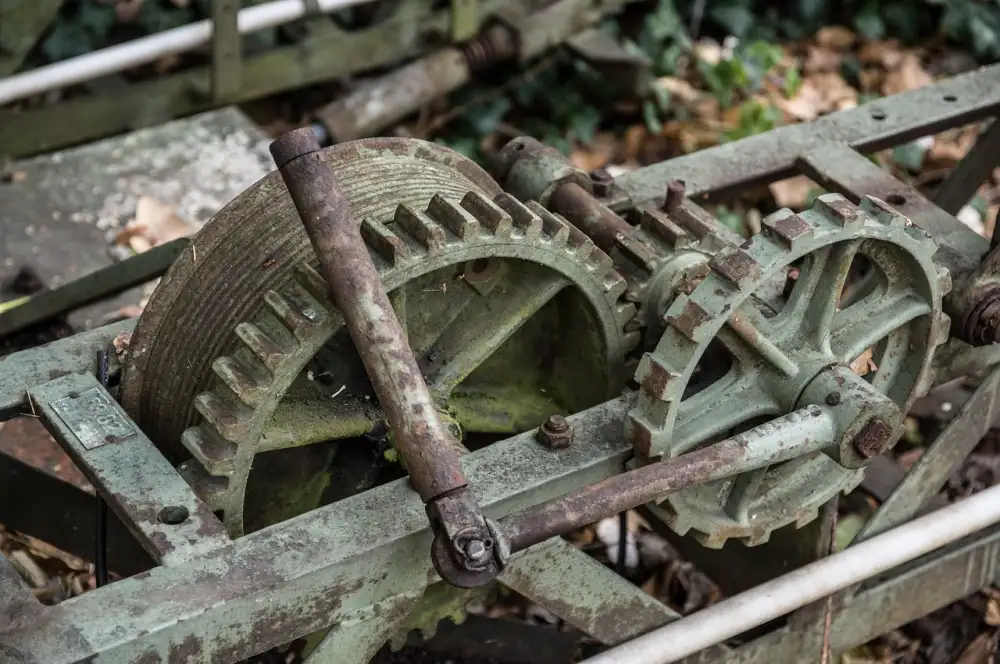Master the Art of Cleaning a Cast Iron Pan: A Step-by-Step Guide for a Spotless Kitchen

A cast iron pan is a beloved kitchen tool that can last for generations if properly cared for. Not only does it provide excellent heat distribution and retention, but it also adds flavor to your dishes over time. However, to ensure its longevity and optimal performance, it is crucial to master the art of cleaning a cast iron pan. By following the right techniques, you can maintain its non-stick surface and prevent rusting. In this step-by-step guide, we will walk you through the process of cleaning your cast iron pan, so you can enjoy spotless cooking and savor the rich history behind every meal.
Gather the Necessary Supplies for Cleaning
To properly clean a cast iron pan, it is important to gather the necessary supplies beforehand. Here's what you'll need:
1. Hot water: Make sure to have hot water available for cleaning. The heat helps loosen any food particles stuck to the pan.
2. Soft brush or sponge: Use a soft-bristled brush or sponge specifically designed for cast iron pans. Avoid using abrasive materials that can scratch the surface.
3. Coarse salt: Coarse salt acts as a natural abrasive and helps remove stubborn residue without damaging the pan.
4. Oil: Choose a high smoke point oil like vegetable oil or flaxseed oil for seasoning and maintaining the pan's non-stick surface.
By having these supplies ready, you'll be well-prepared to tackle any cleaning challenges that come your way and ensure your cast iron pan stays in top-notch condition.
Start with Gentle Scrubbing Using Hot Water and a Soft Brush
To start cleaning your cast iron pan, begin by gently scrubbing it using hot water and a soft brush. This step is crucial in removing any loose food particles or residue from the surface of the pan. Avoid using harsh soaps or abrasive materials, as they can strip away the seasoning of the pan. Instead, opt for a mild dish soap if necessary. The hot water helps to loosen any stuck-on food, making it easier to remove. Use the soft brush to gently scrub the pan in circular motions, paying extra attention to any stubborn areas. Be sure to clean both the interior and exterior of the pan thoroughly. Once you have finished scrubbing, rinse the pan with hot water to remove any remaining soap or debris.
Remove Stubborn Residue with Coarse Salt and Oil
To remove stubborn residue from your cast iron pan, you can rely on the powerful combination of coarse salt and oil. First, sprinkle a generous amount of coarse salt onto the surface of the pan. Then, using a paper towel or a clean cloth, rub the salt into the residue in a circular motion. The abrasive texture of the salt will help lift off any stuck-on food particles. After scrubbing with salt, pour a small amount of oil onto the pan and use a paper towel to spread it evenly across the surface. This step helps to further break down any remaining residue and adds an extra layer of protection to your pan's seasoning. Allow the oil to sit on the pan for a few minutes before wiping away any excess with a clean cloth. Your cast iron pan should now be free from stubborn residue and ready for further cleaning and maintenance.
To remove stubborn residue from your cast iron pan, you can rely on the powerful combination of coarse salt and oil. First, sprinkle a generous amount of coarse salt onto the surface of the pan. Then, using a paper towel or a clean cloth, rub the salt into the residue in a circular motion. The abrasive texture of the salt will help lift off any stuck-on food particles. After scrubbing with salt, pour a small amount of oil onto the pan and use a paper towel to spread it evenly across the surface. This step helps to further break down any remaining residue and adds an extra layer of protection to your pan's seasoning. Allow the oil to sit on the pan for a few minutes before wiping away any excess with a clean cloth. Your cast iron pan should now be free from stubborn residue and ready for further cleaning and maintenance.
Rinse Thoroughly and Dry Immediately
After scrubbing away any food particles and residue from your cast iron pan, it's crucial to rinse it thoroughly with hot water. This will help remove any remaining soap or cleaning agents that may have been used during the scrubbing process. Make sure to use hot water as it helps to loosen any grease or oil that may still be present on the surface of the pan.
Once you've rinsed the pan, it's important to dry it immediately. Leaving your cast iron pan wet can lead to rusting, which can ruin its performance and longevity. To dry the pan, simply use a clean towel or paper towel to absorb any moisture. You can also place the pan on a low heat burner for a few minutes to ensure all moisture is evaporated.
Remember, drying your cast iron pan promptly is key to preventing rust formation and maintaining its non-stick surface. By following this step in the cleaning process, you'll be able to enjoy cooking with your cast iron pan for years to come.
Season the Cast Iron Pan to Maintain its Non-Stick Surface
To maintain the non-stick surface of your cast iron pan, it is crucial to season it properly. Seasoning creates a protective layer that prevents food from sticking and also helps to build up a natural non-stick coating over time.
To season your cast iron pan, start by preheating your oven to 375°F (190°C). While the oven is heating up, apply a thin layer of vegetable oil or flaxseed oil to the entire surface of the pan, including the handle. Make sure to coat both the inside and outside of the pan evenly.
Place the oiled pan upside down on the middle rack of the preheated oven. This allows any excess oil to drip off and prevents pooling. Place a sheet of aluminum foil on the bottom rack to catch any drips for easy cleanup.
Let the pan bake for about one hour, then turn off the oven and allow it to cool completely before removing. The heat will help bond the oil molecules to the surface of the cast iron, creating a smooth and durable seasoning.
Repeat this process several times, or as needed, to build up a strong seasoning layer. Each time you season, you are enhancing its non-stick properties and making it more resistant to rust.
Remember not to use soap or harsh detergents when cleaning your seasoned cast iron pan as they can strip away the seasoning. Instead, simply rinse with hot water and gently scrub if necessary.
By properly seasoning your cast iron pan, you can enjoy its non-stick benefits while also protecting it from rusting and ensuring its longevity. So take care of your cast iron pan, and it will reward you with delicious meals for years to come!
Store the Pan in a Dry Place to Prevent Rusting
To ensure the longevity and performance of your cast iron pan, it is crucial to store it in a dry place. Moisture is the enemy when it comes to cast iron, as it can lead to rusting. After cleaning and drying your pan thoroughly, find a spot in your kitchen where it can be stored safely. Avoid storing it near the sink or any other area prone to water splashes. Instead, opt for a cool and dry cabinet or shelf. If space is limited, you can also hang the pan using a sturdy hook. By taking this simple step, you will protect your cast iron pan from rusting and preserve its quality for years to come.
By following these simple steps to clean and care for your cast iron pan, you can ensure its longevity and maintain its excellent performance in the kitchen. Properly cleaning your cast iron pan not only removes any food residue but also helps to prevent rusting, ensuring that it will last for years to come.
Remember to gather all the necessary supplies before starting the cleaning process, including hot water, a soft brush, coarse salt, and oil. Begin by gently scrubbing the pan with hot water and a soft brush to remove any loose debris. For stubborn residue, use coarse salt and oil as a natural abrasive.
After thoroughly rinsing the pan, make sure to dry it immediately to prevent any moisture from causing rust. Once dry, season the cast iron pan by applying a thin layer of oil and heating it on low heat for a few minutes. This step helps to maintain its non-stick surface and enhance its performance.
Lastly, store your cast iron pan in a dry place to avoid any moisture buildup that could lead to rusting. A well-maintained cast iron pan will reward you with delicious meals for years to come.
So go ahead and master the art of cleaning your cast iron pan. With proper care and maintenance, you can enjoy the benefits of this versatile kitchen tool for generations while creating culinary masterpieces that tell their own stories.
Published: 16. 12. 2023
Category: Home



